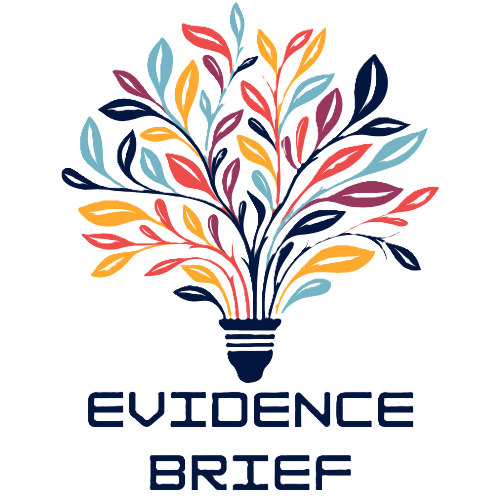As a writing instructor for over a decade, I’ve seen countless creative writing textbooks come and go. Yet finding the perfect guide to nurture budding writers remains a challenge. That’s why I decided to explore the most effective textbooks that truly make a difference in developing creative writing skills.
Creative writing textbooks serve as essential tools for both students and teachers navigating the complex world of storytelling. While some focus on technical aspects like plot structure and character development others delve into the artistry of language and emotional resonance. I’ve discovered that the best textbooks strike a delicate balance between practical instruction and creative inspiration – making them invaluable resources for writers at any stage of their journey.
Key Takeaways
- Effective creative writing textbooks must balance practical instruction with creative inspiration, featuring clear learning objectives and hands-on writing exercises.
- The best textbooks include progressive skill-building structures, moving from basic grammar to advanced techniques like style refinement and genre mastery over 6-8 months.
- Essential components include diverse literary examples from contemporary and classic works, comprehensive assessment tools, and practical writing prompts for immediate practice.
- Popular textbooks like “”Writing Fiction”” by Janet Burroway and “”The Poet’s Companion”” by Kim Addonizio remain industry standards due to their comprehensive approach and practical exercises.
- When choosing a textbook, consider experience level (beginner to advanced) and genre focus (fiction, poetry, or creative nonfiction) to match learning goals.
- Both digital and print formats offer unique benefits – digital versions provide interactive elements and instant updates, while print copies offer distraction-free learning and better retention through physical engagement.
Creative Writing Textbooks
Clear Learning Objectives
An effective creative writing textbook establishes specific learning milestones through well-defined objectives. I’ve found that successful textbooks include measurable goals for each chapter such as “”compose three distinct character descriptions”” or “”develop a compelling story arc using the five-point plot structure.””
Practical Exercises
Creative writing textbooks excel when they incorporate hands-on writing prompts throughout each chapter. The most useful exercises:
- Generate immediate writing opportunities
- Include word count parameters
- Provide focused genre-specific practice
- Offer multiple difficulty levels
- Connect directly to the chapter concepts
Progressive Skill Building
 The content structure advances from foundational elements to complex techniques. I recognize effective textbooks by their strategic skill progression:
The content structure advances from foundational elements to complex techniques. I recognize effective textbooks by their strategic skill progression:
| Skill Level | Focus Areas | Time Frame |
|---|---|---|
| Beginner | Grammar basics narrative structure | 1-2 months |
| Intermediate | Character development plot mechanics | 2-4 months |
| Advanced | Style refinement genre mastery | 4-6 months |
Example-Rich Content
Strong creative writing textbooks demonstrate concepts through diverse literary examples. The most effective examples include:
- Contemporary published works
- Classic literature excerpts
- Student writing samples
- Genre-specific illustrations
- Cross-cultural narratives
Assessment Tools
Effective textbooks incorporate evaluation methods that measure writing progress. Essential assessment components include:
- Self-evaluation checklists
- Peer review guidelines
- Scoring rubrics
- Portfolio development guides
- Revision strategies
- Literary device glossaries
- Genre conventions
- Grammar quick guides
- Publishing guidelines
- Digital writing resources
Key Elements of Top Creative Writing Textbooks
Creative writing textbooks contain essential components that enhance the learning experience for writers. These elements work together to create a comprehensive educational resource that develops both technical skills and artistic expression.
Writing Exercises and Prompts
Writing exercises form the practical backbone of creative writing textbooks, offering hands-on opportunities to apply theoretical concepts. I’ve found the most effective textbooks include 3-5 targeted exercises per chapter, ranging from 15-minute flash exercises to multi-day projects. Common exercise types include:
- Character development prompts (personality profiles, dialogue practice, backstory creation)
- Setting exploration activities (sensory descriptions, world-building worksheets)
- Plot structuring exercises (story outlines, scene mapping, conflict resolution)
- Voice development drills (POV switches, tense variations, tone adjustments)
- Genre-specific challenges (mystery plotting, fantasy world creation, romance arc design)
- Contemporary fiction excerpts showing modern narrative techniques
- Classic literature passages illustrating enduring storytelling principles
- Genre-specific samples demonstrating specialized writing conventions
- Cross-cultural texts exploring varied storytelling traditions
- Student writing examples presenting relatable learning outcomes
| Example Type | Typical Length | Purpose |
|---|---|---|
| Micro-excerpts | 1-2 paragraphs | Technique demonstration |
| Extended passages | 2-3 pages | In-depth analysis |
| Complete short works | 5-10 pages | Comprehensive study |
| Student samples | 1-4 pages | Peer learning |
Most Popular Creative Writing Textbooks Today
After reviewing hundreds of creative writing textbooks across different genres, I’ve identified the most influential titles that consistently demonstrate exceptional educational value. These resources shape writing curricula in universities nationwide.
Fiction Writing Guides
“”Writing Fiction: A Guide to Narrative Craft”” by Janet Burroway remains the top-selling fiction writing textbook, with over 500,000 copies sold. “”On Writing Well”” by William Zinsser provides clear instruction on narrative techniques through 12 focused chapters. “”The Art of Fiction”” by John Gardner breaks down complex storytelling concepts into 32 actionable lessons.
| Title | Author | Key Features | Publication Year |
|---|---|---|---|
| Writing Fiction | Janet Burroway | Writing exercises, contemporary examples | 2019 |
| On Writing Well | William Zinsser | Style guidance, editing tips | 2016 |
| The Art of Fiction | John Gardner | Literary analysis, technique breakdown | 2010 |
Poetry and Creative Nonfiction Texts
“”The Poet’s Companion”” by Kim Addonizio leads poetry instruction with 200+ writing prompts. “”Tell It Slant”” by Brenda Miller dominates creative nonfiction education through its systematic approach to memoir writing. “”In the Palm of Your Hand”” by Steve Kowit presents 75 poetry exercises with clear examples.
| Title | Author | Focus Area | Notable Elements |
|---|---|---|---|
| The Poet’s Companion | Kim Addonizio | Poetry | Writing prompts, form guides |
| Tell It Slant | Brenda Miller | Creative Nonfiction | Essay structures, revision strategies |
| In the Palm of Your Hand | Steve Kowit | Poetry | Step-by-step exercises, analysis tools |
How to Choose the Right Creative Writing Textbook
Selecting a creative writing textbook requires careful evaluation of specific criteria that align with learning goals. I’ve identified key factors that determine the effectiveness of these educational resources based on extensive classroom testing and student feedback.
Experience Level Considerations
Creative writing textbooks vary significantly in their complexity and approach to teaching fundamentals. Entry-level texts include basic writing concepts with step-by-step guidance, such as “”The Writer’s Way”” or “”Writing Down the Bones.”” Intermediate textbooks focus on craft development through advanced techniques like narrative structure, character arc development and scene construction. Advanced textbooks delve into experimental forms, complex narrative strategies and professional publishing insights, exemplified in texts like “”Reading Like a Writer”” by Francine Prose.
Genre-Specific Options
Each writing genre demands distinct approaches and technical understanding. Fiction textbooks emphasize plot development, character creation and dialogue techniques, as found in “”The Making of a Story”” by Alice LaPlante. Poetry textbooks concentrate on form, meter and imagery, demonstrated in “”Western Wind”” by John Frederick Nims. Creative nonfiction texts explore memoir writing, personal essays and literary journalism, like “”To Tell the Truth”” by Connie Griffin. Multi-genre textbooks offer broader coverage but provide less depth in specific areas.
| Genre | Key Focus Areas | Example Textbook |
|---|---|---|
| Fiction | Plot, Character, Dialogue | The Making of a Story |
| Poetry | Form, Meter, Imagery | Western Wind |
| Creative Nonfiction | Memoir, Essays, Literary Journalism | To Tell the Truth |
| Multi-genre | Basic Writing Principles | The Writer’s Way |
Using Creative Writing Textbooks in the Classroom
Integrating Textbook Exercises
Creative writing textbooks provide structured lesson plans that enhance classroom engagement. I integrate textbook exercises by selecting 2-3 activities per class session focusing on specific writing skills like dialogue crafting dialogue building plots. These exercises create opportunities for immediate practice application feedback.
Group Activities and Discussions
Textbooks serve as springboards for collaborative learning experiences in the classroom. I organize students into groups of 4-5 members to analyze example texts discuss writing techniques practice peer review. Common group activities include:
- Analyzing story structure in textbook excerpts
- Practicing dialogue writing through role-play exercises
- Workshopping character descriptions from student drafts
- Comparing narrative perspectives across different passages
Assessment and Feedback
The assessment tools in creative writing textbooks provide clear evaluation frameworks. I use:
| Assessment Type | Frequency | Purpose |
|---|---|---|
| Writing prompts | Weekly | Skill practice |
| Peer workshops | Bi-weekly | Collaborative feedback |
| Portfolio reviews | Monthly | Progress tracking |
| Concept quizzes | Per unit | Understanding check |
Adapting Textbook Content
Textbook materials require strategic adaptation to meet diverse student needs. I modify exercises by:
- Breaking complex assignments into smaller manageable tasks
- Creating differentiated prompts for varying skill levels
- Incorporating multimedia elements into text-based lessons
- Adjusting time allocations based on classroom dynamics
- Online writing forums for extended discussions
- Digital submission platforms for assignments
- Interactive writing tools for real-time feedback
- Virtual workshops for remote collaboration
Digital vs Print Creative Writing Resources
Digital creative writing resources offer instant accessibility through e-readers tablets mobile devices while print textbooks provide a tangible learning experience with proven pedagogical benefits.
Digital Advantages
- Interactive Elements: E-textbooks include clickable exercises video tutorials writing prompts
- Search Functionality: Digital platforms enable quick navigation through chapters concepts examples
- Annotation Tools: Electronic highlighting note-taking features sync across multiple devices
- Updates: Publishers push regular content updates writing samples modern examples
- Multimedia Integration: Audio recordings author interviews video demonstrations enhance learning
Print Benefits
- Physical Engagement: Handwritten annotations margin notes encourage active learning
- Distraction-Free: Print books eliminate digital notifications social media interruptions
- Visual Memory: Physical page layouts aid concept retention spatial memory formation
- Durability: Print books last 15+ years without technological obsolescence concerns
- Tactile Learning: Page-turning highlighting underlining reinforce cognitive processing
Cost Comparison
| Format | Average Cost | Lifetime | Additional Features |
|---|---|---|---|
| Digital | $45-75 | 180-365 days | Interactive tools updates |
| $75-120 | Permanent | No subscription required | |
| Hybrid | $95-150 | Mixed | Print + digital access |
Accessibility Considerations
- Digital: Screen readers text-to-speech features benefit visually impaired users
- Print: No internet connection required for consistent access
- Font Flexibility: Digital formats allow text size color contrast adjustments
- Weight: E-readers store multiple textbooks without physical burden
- Sharing: Print books enable easy lending between students instructors
- Digital: Cloud-based writing workshops online peer reviews
- Print: In-class annotations group discussions physical workshops
- Hybrid: Combined approach using print textbooks digital supplements
- Assessment: Digital tracking tools complement print exercises
- Collaboration: Mixed-format writing groups enhance learning experiences
I’ve found that choosing the right creative writing textbook is crucial for both teaching and learning success. The perfect textbook balances technical instruction with creative inspiration while providing practical exercises that spark imagination.
Whether you opt for digital or print formats the key is finding resources that align with your specific learning goals. I recommend exploring multiple textbooks to discover which ones resonate with your teaching style or learning preferences.
Remember that the best creative writing textbook is one that you’ll actually use consistently. Look for engaging content clear instructions and relevant examples that speak to your needs. With the right textbook as your guide you’ll be well-equipped to develop your creative writing skills or help others discover their literary voice.

